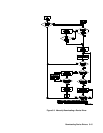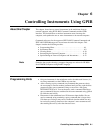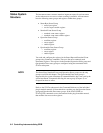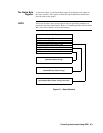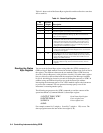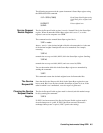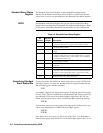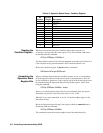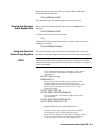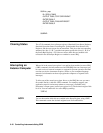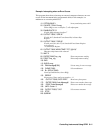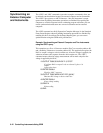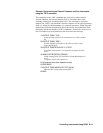
unmasked, an GPIB service request (SRQ) will be generated. ("Interrupting the
External Computer", later in this chapter contains an example program which
demonstrates this sequence).
Note that the Standard Event Status Register bits that are not unmasked still
respond to their corresponding conditions. They do not, however, set bit 5 in the
Status Byte Register.
Reading the Standard
Event Status Enable
Register Mask
You can determine which bits in the Standard Event Status register are
unmasked with the command:
* ESE?
This command returns the decimal weighted sum of all unmasked bits.
The Standard Event Status Enable register is cleared (all bits masked) by
sending the command:
* ESE 0
Reading the Standard
Event Status Register
You can determine which bits in the Standard Event Status register are set using
the command:
* ESR?
This command returns the decimal weighted sum of all set bits. *ESR? clears
the register. *CLS also clears the register.
Both of these commands return the decimal weighted sum of all set or enabled
bits.
Operation Status
Group
The registers in the Standard Operation Status Group provide information
about the state of measurement functions within an instrument. These functions
are represented by bits in the Condition register which is described in Table 4-3.
The System Instrument (Command Module) only uses bit 8 in the Condition
register. Bit 8 (when set) indicates that an interrupt set up by the
DIAGnostic:INTerrupt commands has occurred and has been acknowledged.
NOTE The registers in the Operation Status Group and the DIAGnostic:INTerrupt
commands are only used when, for a specific VXIbus interrupt line, it is
necessary to replace the operating system’s interrupt service routine with the
System Instrument’s service routine. Agilent VXIbus devices used with the
Command Module use the operating system service routine. The VXIbus
interrupt line that is used by these devices (primarily line 1), should not be used
with the DIAGnostic:INTerrupt commands.
The DIAGnostic:INTerrupt commands are covered in Chapter 5.
Controlling Instruments Using GPIB 6-7



